Filter by
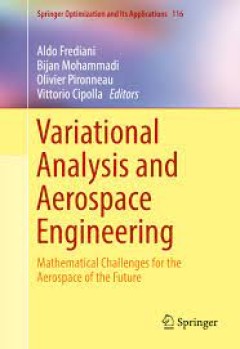
Variational Analysis and Aerospace Engineering Mathematical Challenges for t…
This book presents papers surrounding the extensive discussions that took place from the ‘Variational Analysis and Aerospace Engineering’ workshop held at the Ettore Majorana Foundation and Centre for Scientific Culture in 2015. Contributions to this volume focus on advanced mathematical methods in aerospace engineering and industrial engineering such as computational fluid dynamics metho…
- Edition
- -
- ISBN/ISSN
- 978-3-319-45680-5
- Collation
- 64 b/w illustrations, 219 illustrations in colour
- Series Title
- -
- Call Number
- -
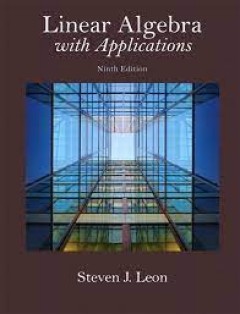
Linear Algebra with Applications
This textbook is an introduction to the ideas and techniques of linear algebra for first- or second-year students with a working knowledge of high school algebra. The contents have enough flexibility to present a traditional introduction to the subject, or to allow for a more applied course. Chapters 1–4 contain a onesemester course for beginners whereas Chapters 5–9 contain a second se…
- Edition
- -
- ISBN/ISSN
- -
- Collation
- -
- Series Title
- -
- Call Number
- 512 NIC l
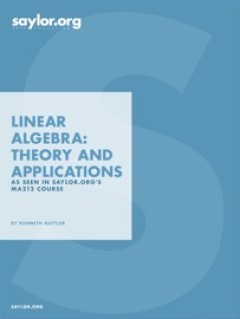
Linear Algebra : Theory And Applications
This is a book on linear algebra and matrix theory. While it is self contained, it will work best for those who have already had some exposure to linear algebra. It is also assumed that the reader has had calculus. Some optional topics require more analysis than this, however. I think that the subject of linear algebra is likely the most significant topic discussed in undergraduate mathematics …
- Edition
- -
- ISBN/ISSN
- -
- Collation
- -
- Series Title
- -
- Call Number
- 512 KUT l
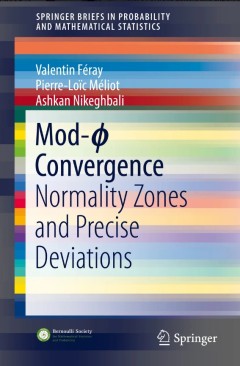
Mod-ϕ Convergence: Normality Zones and Precise Deviations
The canonical way to establish the central limit theorem for i.i.d. random variables is to use characteristic functions and Lévy’s continuity theorem. This monograph focuses on this characteristic function approach and presents a renormalization theory called mod-ϕ convergence. This type of convergence is a relatively new concept with many deep ramifications, and has not previously been pub…
- Edition
- 1
- ISBN/ISSN
- 978-3-319-46821-1
- Collation
- XII, 152; 8 b/w illustrations, 9 illustrations in colour
- Series Title
- SpringerBriefs in Probability and Mathematical Statistics
- Call Number
- -
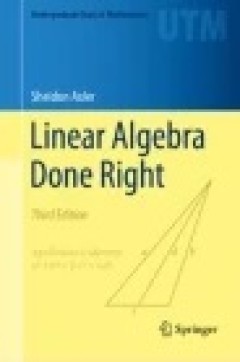
Linear Algebra Done Right
This best-selling textbook for a second course in linear algebra is aimed at undergrad math majors and graduate students. The novel approach taken here banishes determinants to the end of the book. The text focuses on the central goal of linear algebra: understanding the structure of linear operators on finite-dimensional vector spaces. The author has taken unusual care to motivate concepts and…
- Edition
- -
- ISBN/ISSN
- 978-3-319-11080-6
- Collation
- -
- Series Title
- -
- Call Number
- -
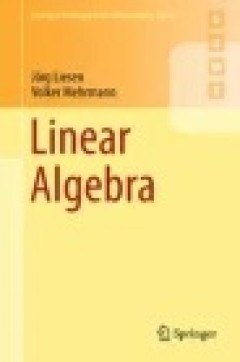
Linear Algebra
This self-contained textbook takes a matrix-oriented approach to linear algebra and presents a complete theory, including all details and proofs, culminating in the Jordan canonical form and its proof. Throughout the development, the applicability of the results is highlighted. Additionally, the book presents special topics from applied linear algebra including matrix functions, the singular va…
- Edition
- -
- ISBN/ISSN
- 978-3-319-24346-7
- Collation
- -
- Series Title
- -
- Call Number
- -
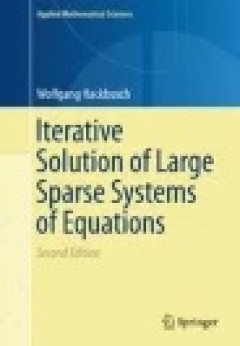
Iterative Solution of Large Sparse Systems of Equations
In the second edition of this classic monograph, complete with four new chapters and updated references, readers will now have access to content describing and analysing classical and modern methods with emphasis on the algebraic structure of linear iteration, which is usually ignored in other literature. The necessary amount of work increases dramatically with the size of systems, so one ha…
- Edition
- -
- ISBN/ISSN
- 978-3-319-28483-5
- Collation
- -
- Series Title
- -
- Call Number
- -
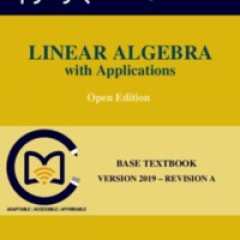
Linear Algebra with Applications. Open Edition
his textbook is an introduction to the ideas and techniques of linear algebra for first- or second-year students with a working knowledge of high school algebra. The contents have enough flexibility to present a traditional introduction to the subject, or to allow for a more applied course. Chapters 1–4 contain a onesemester course for beginners whereas Chapters 5–9 contain a second semes…
- Edition
- -
- ISBN/ISSN
- -
- Collation
- -
- Series Title
- -
- Call Number
- 500
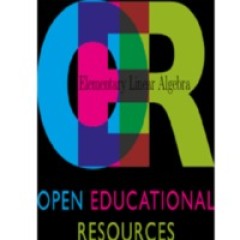
Linear Algebra, Theory And Applications
his is a book on linear algebra and matrix theory. While it is self contained, it will work best for those who have already had some exposure to linear algebra. It is also assumed that the reader has had calculus. Some optional topics require more analysis than this, however. I think that the subject of linear algebra is likely the most significant topic discussed in undergraduate mathematics c…
- Edition
- -
- ISBN/ISSN
- -
- Collation
- -
- Series Title
- -
- Call Number
- 500
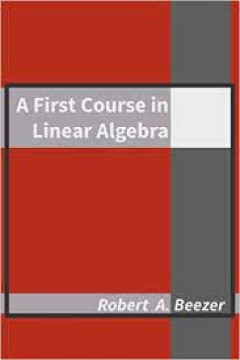
A First Course in Linear Algebra
In this book, there are five chapters: Systems of Linear Equations, Vector Spaces, Homogeneous Systems, Characteristic Equation of Matrix, and Matrix Dot Product. It has also exercises at the end of each chapter above to let students practice additional sets of problems other than examples, and they can also check their solutions to some of these exercises by looking at “Answers to Odd-Number…
- Edition
- -
- ISBN/ISSN
- 9780984417551
- Collation
- -
- Series Title
- -
- Call Number
- 512
 Computer Science, Information & General Works
Computer Science, Information & General Works  Philosophy & Psychology
Philosophy & Psychology  Religion
Religion  Social Sciences
Social Sciences  Language
Language  Pure Science
Pure Science  Applied Sciences
Applied Sciences  Art & Recreation
Art & Recreation  Literature
Literature  History & Geography
History & Geography